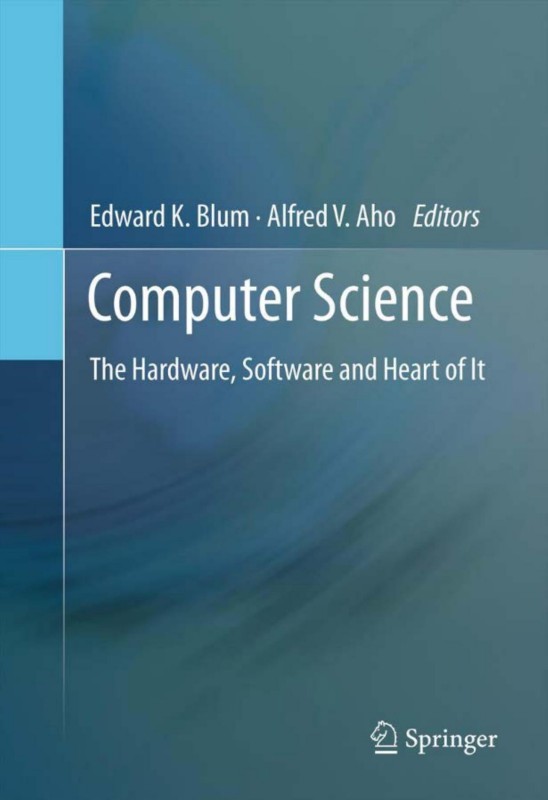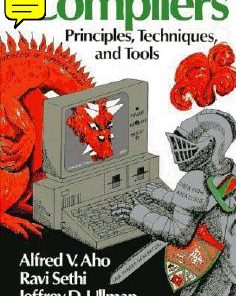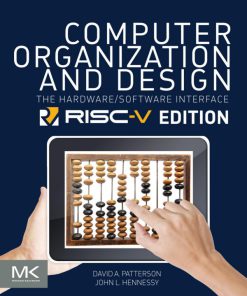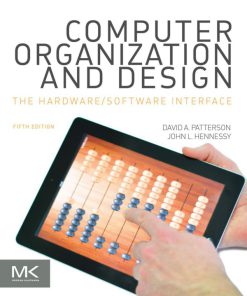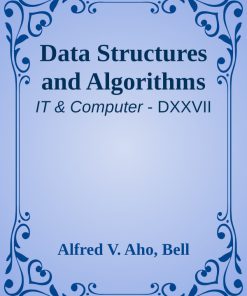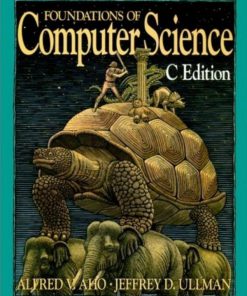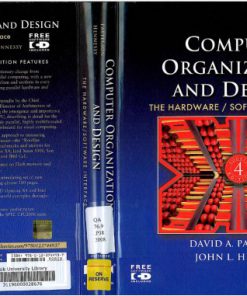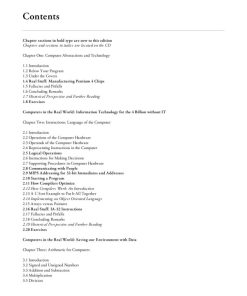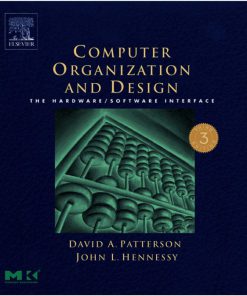Computer Science The Hardware Software and Heart of It 2011th Edition by Edward K Blum, Alfred V Aho ISBN 146141167X 9781461411673
$50.00 Original price was: $50.00.$25.00Current price is: $25.00.
Authors:Alfred V. Aho, Edward K. Blum , Tags:Springer 2011; 146141167X 9781461411673 , Author sort:Alfred V. Aho, Edward K. Blum , Languages:Languages:eng
Computer Science The Hardware Software and Heart of It 2011th Edition by Edward K Blum, Alfred V Aho – Ebook PDF Instant Download/Delivery. 146141167X, 9781461411673
Full download Computer Science The Hardware Software and Heart of It 2011th Edition after payment
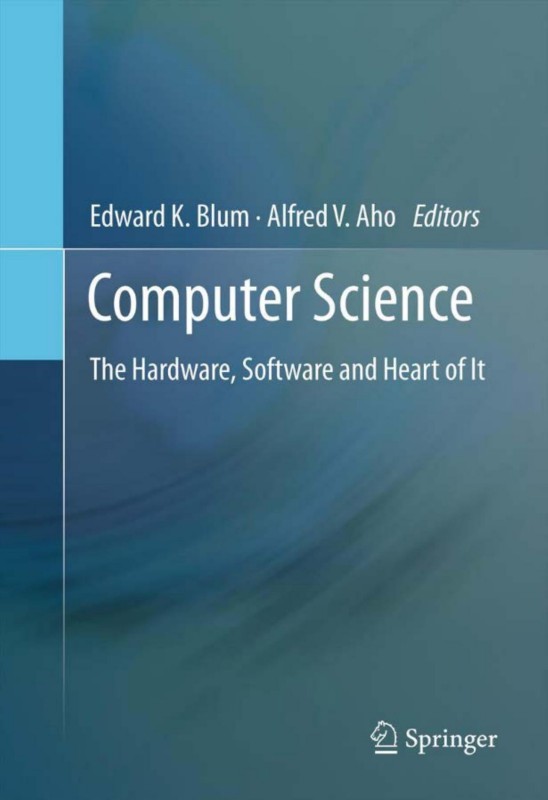
Product details:
ISBN 10: 146141167X
ISBN 13: 9781461411673
Author: Edward K Blum, Alfred V Aho
Computer Science: The Hardware, Software and Heart of It focuses on the deeper aspects of the two recognized subdivisions of Computer Science, Software and Hardware. These subdivisions are shown to be closely interrelated as a result of the stored-program concept. Computer Science: The Hardware, Software and Heart of It includes certain classical theoretical computer science topics such as Unsolvability (e.g. the halting problem) and Undecidability (e.g. Godel’s incompleteness theorem) that treat problems that exist under the Church-Turing thesis of computation. These problem topics explain inherent limits lying at the heart of software, and in effect define boundaries beyond which computer science professionals cannot go beyond. Newer topics such as Cloud Computing are also covered in this book. After a survey of traditional programming languages (e.g. Fortran and C++), a new kind of computer Programming for parallel/distributed computing is presented using the message-passing paradigm which is at the heart of large clusters of computers. This leads to descriptions of current hardware platforms for large-scale computing, such as clusters of as many as one thousand which are the new generation of supercomputers. This also leads to a consideration of future quantum computers and a possible escape from the Church-Turing thesis to a new computation paradigm.
The book’s historical context is especially helpful during this, the centenary of Turing’s birth. Alan Turing is widely regarded as the father of Computer Science, since many concepts in both the hardware and software of Computer Science can be traced to his pioneering research. Turing was a multi-faceted mathematician-engineer and was able to work on both concrete and abstract levels. This book shows how these two seemingly disparate aspects of Computer Science are intimately related. Further, the book treats the theoretical side ofComputer Science as well, which also derives from Turing’s research.
Computer Science: The Hardware, Software and Heart of It is designed as a professional book for practitioners and researchers working in the related fields of Quantum Computing, Cloud Computing, Computer Networking, as well as non-scientist readers. Advanced-level and undergraduate students concentrating on computer science, engineering and mathematics will also find this book useful.
Computer Science The Hardware Software and Heart of It 2011th Table of contents:
Chapter 1: Introduction to Computer Science
- 1.1 The Evolution of Computing
- 1.2 Defining Computer Science: Hardware, Software, and Algorithms
- 1.3 The Role of Computer Science in Modern Society
- 1.4 Understanding the Relationship Between Hardware and Software
- 1.5 Key Areas of Study in Computer Science
Chapter 2: The Building Blocks of Computer Hardware
- 2.1 Basic Components: CPU, Memory, and I/O
- 2.2 The Central Processing Unit (CPU): Function and Architecture
- 2.3 Memory Hierarchy: Registers, Cache, and Main Memory
- 2.4 Input and Output Devices
- 2.5 Understanding Digital Logic and Circuitry
- 2.6 Computer Architecture: A Detailed Overview
Chapter 3: Software Fundamentals
- 3.1 What is Software? Types and Classifications
- 3.2 Operating Systems: Managing Hardware and Software
- 3.3 Compilers and Interpreters
- 3.4 Programming Languages: From Assembly to High-Level Languages
- 3.5 Software Development Life Cycle (SDLC)
- 3.6 Debugging and Optimization Techniques
Chapter 4: Algorithms and Data Structures
- 4.1 Defining Algorithms: Problem Solving with Computers
- 4.2 Analyzing Algorithm Efficiency: Time and Space Complexity
- 4.3 Common Data Structures: Arrays, Linked Lists, Stacks, and Queues
- 4.4 Trees and Graphs: Structures for Organizing Data
- 4.5 Searching and Sorting Algorithms
- 4.6 Algorithmic Paradigms: Divide and Conquer, Greedy Methods, Dynamic Programming
Chapter 5: The Heart of Computing: Computational Theory
- 5.1 The Theory of Computation: What Can Be Computed?
- 5.2 Turing Machines and Computability
- 5.3 Complexity Theory: P, NP, and Beyond
- 5.4 The Halting Problem and Undecidability
- 5.5 Automata Theory and Formal Languages
- 5.6 Cryptography and Secure Computation
Chapter 6: Networking and the Internet
- 6.1 Basics of Computer Networking
- 6.2 The OSI and TCP/IP Models
- 6.3 Routing, Switching, and Network Topologies
- 6.4 Internet Technologies and Protocols: HTTP, FTP, DNS, and more
- 6.5 Wireless and Mobile Networking
- 6.6 Internet Security: Firewalls, VPNs, and Encryption
Chapter 7: Databases and Information Management
- 7.1 Introduction to Databases and Database Management Systems (DBMS)
- 7.2 Data Modeling: Relational, Hierarchical, and Object-Oriented Models
- 7.3 SQL: Structured Query Language for Data Management
- 7.4 Database Normalization and Optimization
- 7.5 NoSQL Databases: Key-Value, Document, and Graph Databases
- 7.6 Big Data and Distributed Databases
Chapter 8: Artificial Intelligence and Machine Learning
- 8.1 The Basics of Artificial Intelligence (AI)
- 8.2 Problem Solving in AI: Search Algorithms
- 8.3 Machine Learning: Supervised vs. Unsupervised Learning
- 8.4 Neural Networks and Deep Learning
- 8.5 Natural Language Processing (NLP)
- 8.6 AI Applications: Robotics, Autonomous Systems, and Smart Applications
Chapter 9: Software Engineering and Development Methodologies
- 9.1 The Role of Software Engineers
- 9.2 Agile vs. Waterfall Development Methodologies
- 9.3 Version Control and Software Collaboration Tools
- 9.4 Quality Assurance: Testing and Debugging
- 9.5 Continuous Integration and Delivery (CI/CD)
- 9.6 Managing Software Projects: Teams and Best Practices
Chapter 10: Ethical Considerations and Future Trends in Computer Science
- 10.1 Ethical Issues in Computing: Privacy, Security, and Data Protection
- 10.2 The Digital Divide and Access to Technology
- 10.3 Artificial Intelligence and Ethics
- 10.4 Sustainability in Computing and Green Technologies
- 10.5 The Future of Computing: Quantum Computing, Blockchain, and Beyond
- 10.6 The Role of Computer Science in Shaping the Future

